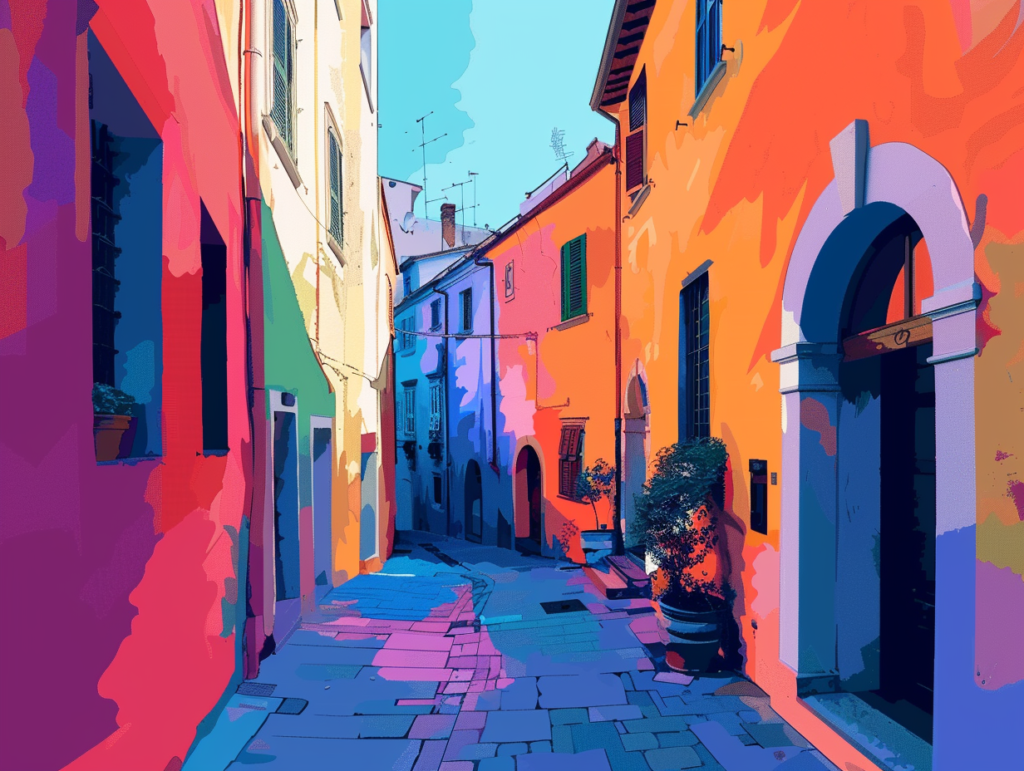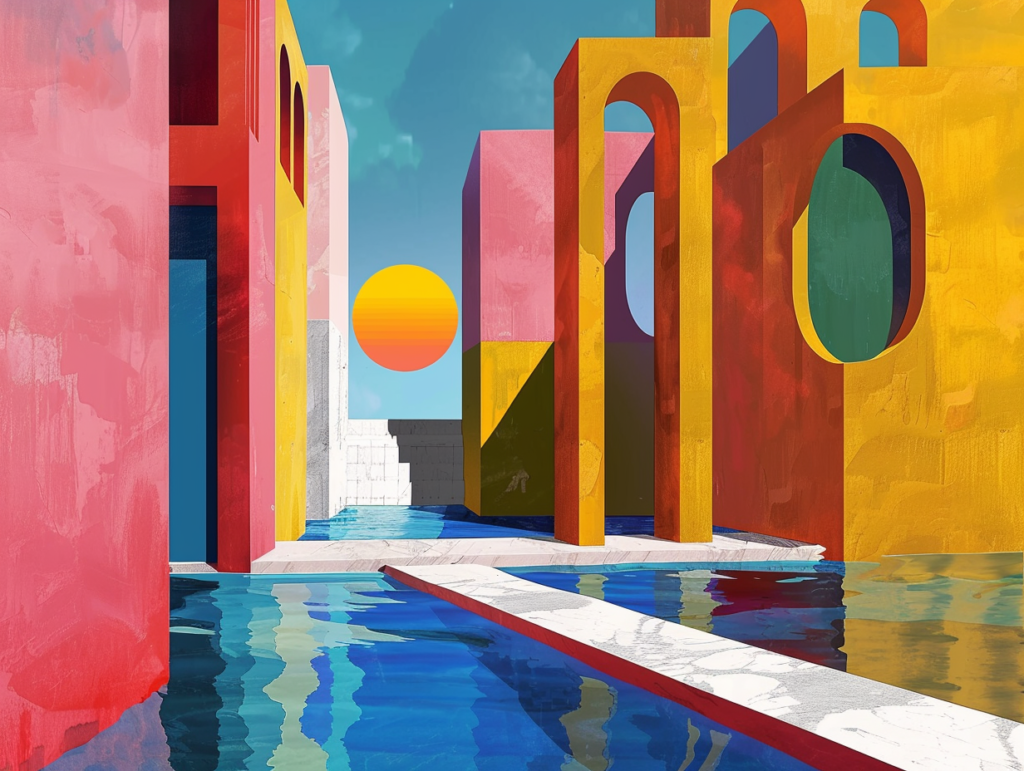As we continue our journey deeper into the world of color theory, we turn our focus toward the sophisticated interplay of colors and how they can be manipulated to enhance visual storytelling. This post explores less conventional color schemes, the psychological impact of colors, and how these elements can be applied in both art and commercial design for compelling results.
Split-Complementary Colors: The Balanced Alternative

Exploring the Concept: The split-complementary color scheme offers a variation of the complementary color scheme but with less tension. It uses one base color and two adjacent tertiary colors from the opposite side of the color wheel. This scheme provides high contrast without the harshness of direct complements.

Modern Case Study: In web design, split-complementary colors are used to create vibrant yet harmonious interfaces. For example, a website might use a dominant navy blue with accents of soft lime and coral for buttons and highlights, creating an engaging but not overwhelming user experience.
Historical Artwork: Henri Matisse’s “The Red Studio” employs a split-complementary scheme with red as the dominant color, flanked by the greens and oranges in various elements around the room. This creates a lively yet balanced atmosphere that invites the viewer into the space.
Theory in Practice: When utilizing a split-complementary scheme, it’s vital to maintain one dominant color while using the other two for accent. This strategy ensures visual interest and harmony without visual confusion.

Tetradic (Double Complementary) Colors: Rich and Complex

Exploring the Concept: The tetradic color scheme uses four colors together, in the form of two complementary color pairs. This scheme is the most varied and typically provides plenty of options for creating color harmony.

Modern Case Study: Branding campaigns often use tetradic schemes to stand out. A promotional poster might feature a bold arrangement of purple, green, orange, and blue, each color drawing attention to different aspects of the message, thereby engaging a broad audience.
Historical Artwork: Paul Gauguin’s “Tahitian Landscape” showcases this approach by using green and red for one pair and orange and blue for the other, creating a lush, vibrant scene that is dynamic yet pleasing to the eye.
Theory in Practice: Balance is crucial in tetradic schemes due to their complexity. The key is to ensure that one color is not overpowering the others, and to use each hue strategically to guide the viewer’s attention around the design.

Color Psychology: Beyond Aesthetics
Understanding Impact: Colors not only beautify a design but also evoke specific psychological responses. For example, blue can signify professionalism and trust, making it popular in business and healthcare settings. Red, known for its urgency and passion, is often used in clearance sales and romantic contexts.
Modern Application: In advertising, understanding color psychology can enhance the effectiveness of campaigns. For instance, using green in a campaign promoting environmental consciousness can reinforce the message and resonate emotionally with the audience.
Practical Implementation
With a deeper understanding of color schemes and psychology, modern creatives can apply these principles to various contexts, from digital art and commercial design to interactive media and physical spaces. Experimentation is key: mix and match color schemes, adjust saturation and brightness, and always consider the emotional weight of your color choices.
Whether you are creating a mural, designing a website, or launching a new brand, sophisticated use of color can elevate your project from ordinary to extraordinary. Embrace the full spectrum of color possibilities and let your creativity flourish!
















